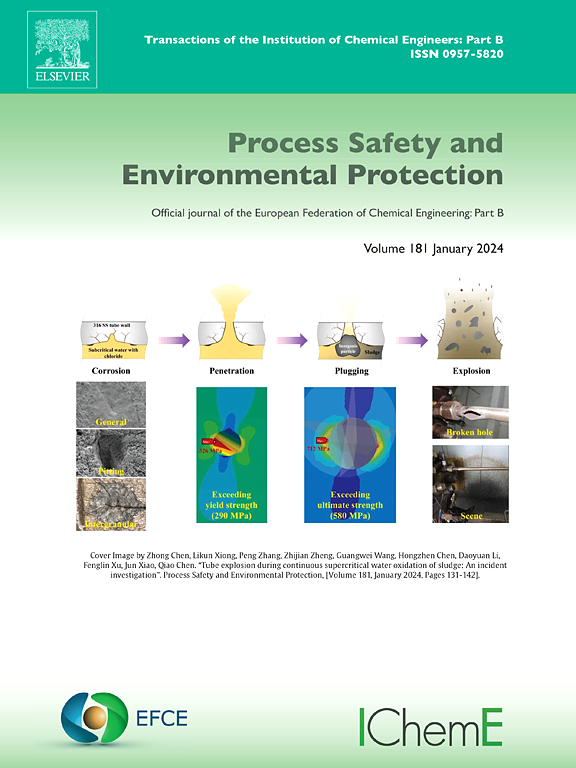Exploration of silica fume effect on solid waste based backfilling material: Mechanical properties, hydration mechanism and economic benefits
IF 6.9
2区 环境科学与生态学
Q1 ENGINEERING, CHEMICAL
引用次数: 0
Abstract
The resource utilization of solid wastes such as silica fume (SF), ground-granulated blast furnace slag (GGBFS), and steel slag (SS) has become a current research hotspot. This study aims to investigate the effect of SF content on the performance and hydration mechanisms of GGBFS-SS-based cementitious filling materials. A low-cost SF-GGBFS-SS-FGD gypsum-based cementitious filling material (SGM) is proposed for the first time, and its compressive strength, fluidity, setting time, shrinkage, electrical conductivity, and leaching safety are evaluated. The results show that when the SF content is 16 %, the SGM exhibits the highest compressive strength at 7 days and 28 days, reaching 1.72 MPa and 3.44 MPa, respectively. The addition of an appropriate amount of SF (10 %) improves the fluidity of SGM (221 cm). Moreover, when the SF content is 16 %, SGM shows the lowest shrinkage rates (3.56 %/4.87 %) and electrical conductivity (6.25 Ω·m/8.78 Ω·m) at 7 days and 28 days. The hydration mechanism is as follows: The incorporation of an appropriate amount of fine-grade SF leads to nucleation crystallization, which provides more active nucleation sites for hydration reactions, increasing the generation and crystallization polymerization degree of hydration products such as C-S-H gel and ettringite. This is reflected in the increased relative number of bridging oxygen (RBO = 22.79 %) in C-S-H gel and the Al[Ⅵ] content in ettringite. The economic analysis results show that, compared to traditional cement binders, the ton production cost of SGM with 16 % SF content is further reduced by 29.59 %. This study provides new insights into the development of low-cost SGM and is of significant importance for the resource utilization of solid wastes such as SF and the application of filling materials.
求助全文
约1分钟内获得全文
求助全文
来源期刊

Process Safety and Environmental Protection
环境科学-工程:化工
CiteScore
11.40
自引率
15.40%
发文量
929
审稿时长
8.0 months
期刊介绍:
The Process Safety and Environmental Protection (PSEP) journal is a leading international publication that focuses on the publication of high-quality, original research papers in the field of engineering, specifically those related to the safety of industrial processes and environmental protection. The journal encourages submissions that present new developments in safety and environmental aspects, particularly those that show how research findings can be applied in process engineering design and practice.
PSEP is particularly interested in research that brings fresh perspectives to established engineering principles, identifies unsolved problems, or suggests directions for future research. The journal also values contributions that push the boundaries of traditional engineering and welcomes multidisciplinary papers.
PSEP's articles are abstracted and indexed by a range of databases and services, which helps to ensure that the journal's research is accessible and recognized in the academic and professional communities. These databases include ANTE, Chemical Abstracts, Chemical Hazards in Industry, Current Contents, Elsevier Engineering Information database, Pascal Francis, Web of Science, Scopus, Engineering Information Database EnCompass LIT (Elsevier), and INSPEC. This wide coverage facilitates the dissemination of the journal's content to a global audience interested in process safety and environmental engineering.
 求助内容:
求助内容: 应助结果提醒方式:
应助结果提醒方式:


